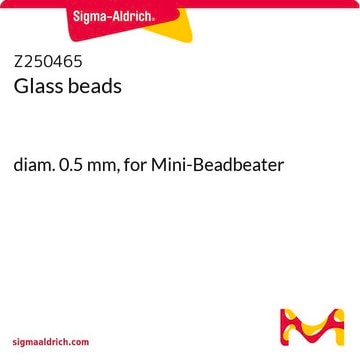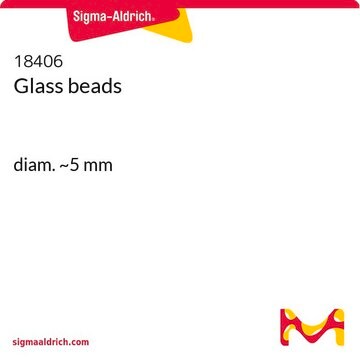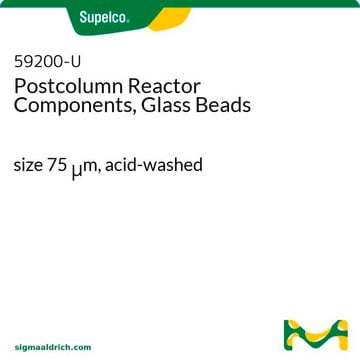The particle size is 425-600 μm (30-40 U.S. sieve) as listed in the 'PROPERTIES' section.
G8772
Perle di vetro, lavate con acido
425-600 μm (30-40 U.S. sieve)
Sinonimo/i:
Microsfere di vetro, Microsfere lavate con acido
Scegli un formato
CHF 49.10
Spedizione prevista il14 maggio 2025
Scegli un formato
About This Item
CHF 49.10
Spedizione prevista il14 maggio 2025
Prodotti consigliati
Dimensione particelle
425-600 μm (30-40 U.S. sieve)
Codice della classe di stoccaggio
11 - Combustible Solids
Classe di pericolosità dell'acqua (WGK)
nwg
Punto d’infiammabilità (°F)
Not applicable
Punto d’infiammabilità (°C)
Not applicable
Dispositivi di protezione individuale
Eyeshields, Gloves, type N95 (US)
Scegli una delle versioni più recenti:
Certificati d'analisi (COA)
Non trovi la versione di tuo interesse?
Se hai bisogno di una versione specifica, puoi cercare il certificato tramite il numero di lotto.
Possiedi già questo prodotto?
I documenti relativi ai prodotti acquistati recentemente sono disponibili nell’Archivio dei documenti.
I clienti hanno visto anche
-
What is the size of these acid-washed glass beads?
1 answer-
Helpful?
-
-
Can glass beads be sterilized? What is the best way to do it?
1 answer-
The glass beads can be autoclaved.
Helpful?
-
-
Do you check the conductivity of G8772 after acid washing the beads and what is the expected range?
1 answer-
We do not test the conductivity of this item.
Helpful?
-
-
How are the glass beads acid washed? We are evaluating it for potential use for lysing S. cerevisiae cells expressing a recombinant protein.
1 answer-
The specific procedure for acid washing glass beads for product G8722 is proprietary and not available.
Helpful?
-
Active Filters
Il team dei nostri ricercatori vanta grande esperienza in tutte le aree della ricerca quali Life Science, scienza dei materiali, sintesi chimica, cromatografia, discipline analitiche, ecc..
Contatta l'Assistenza Tecnica.












